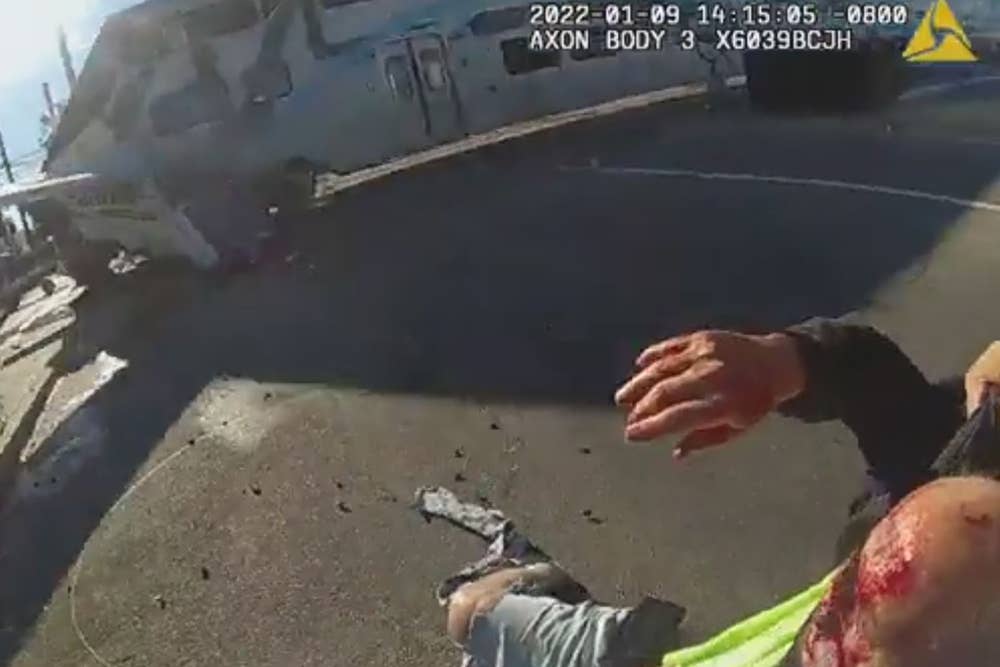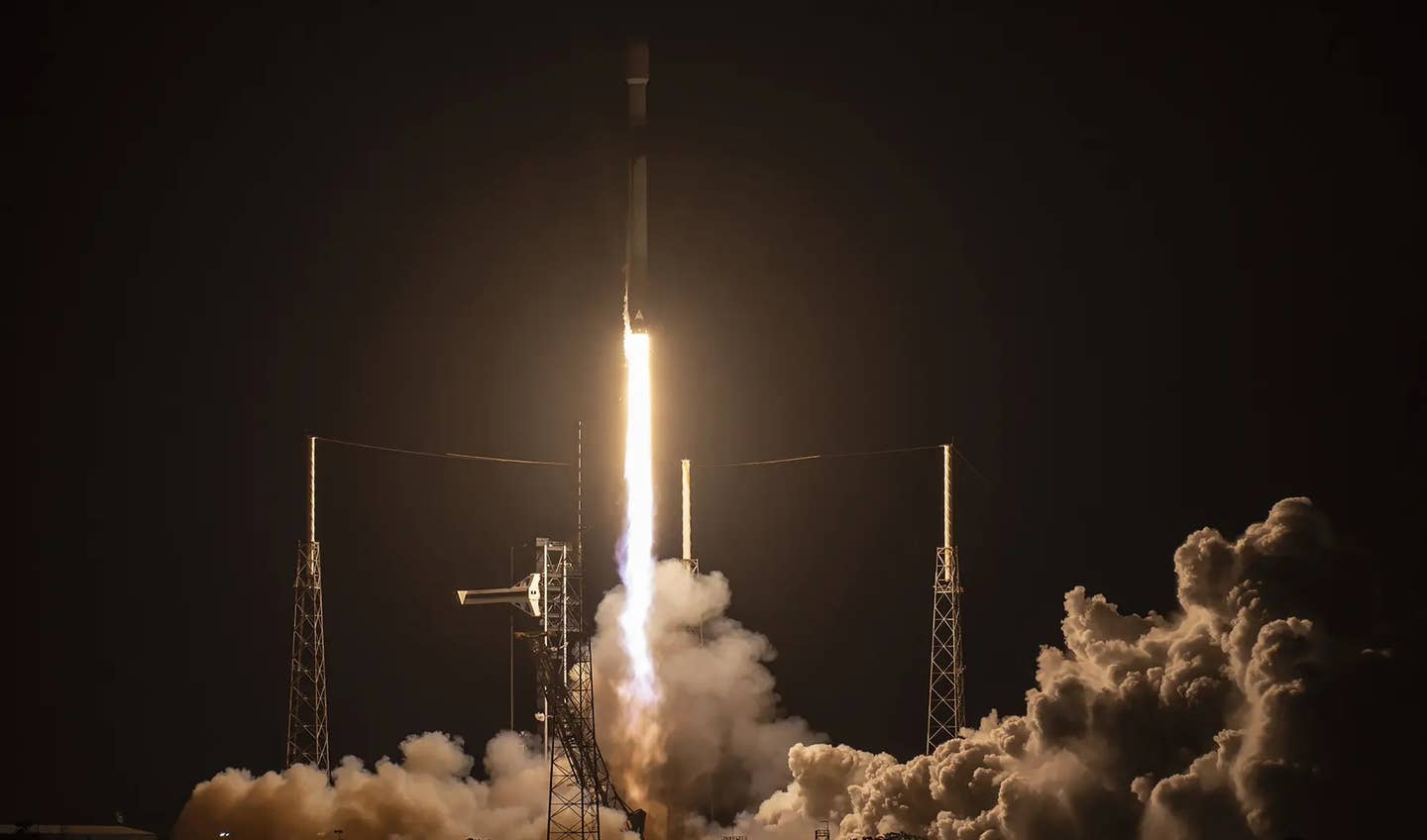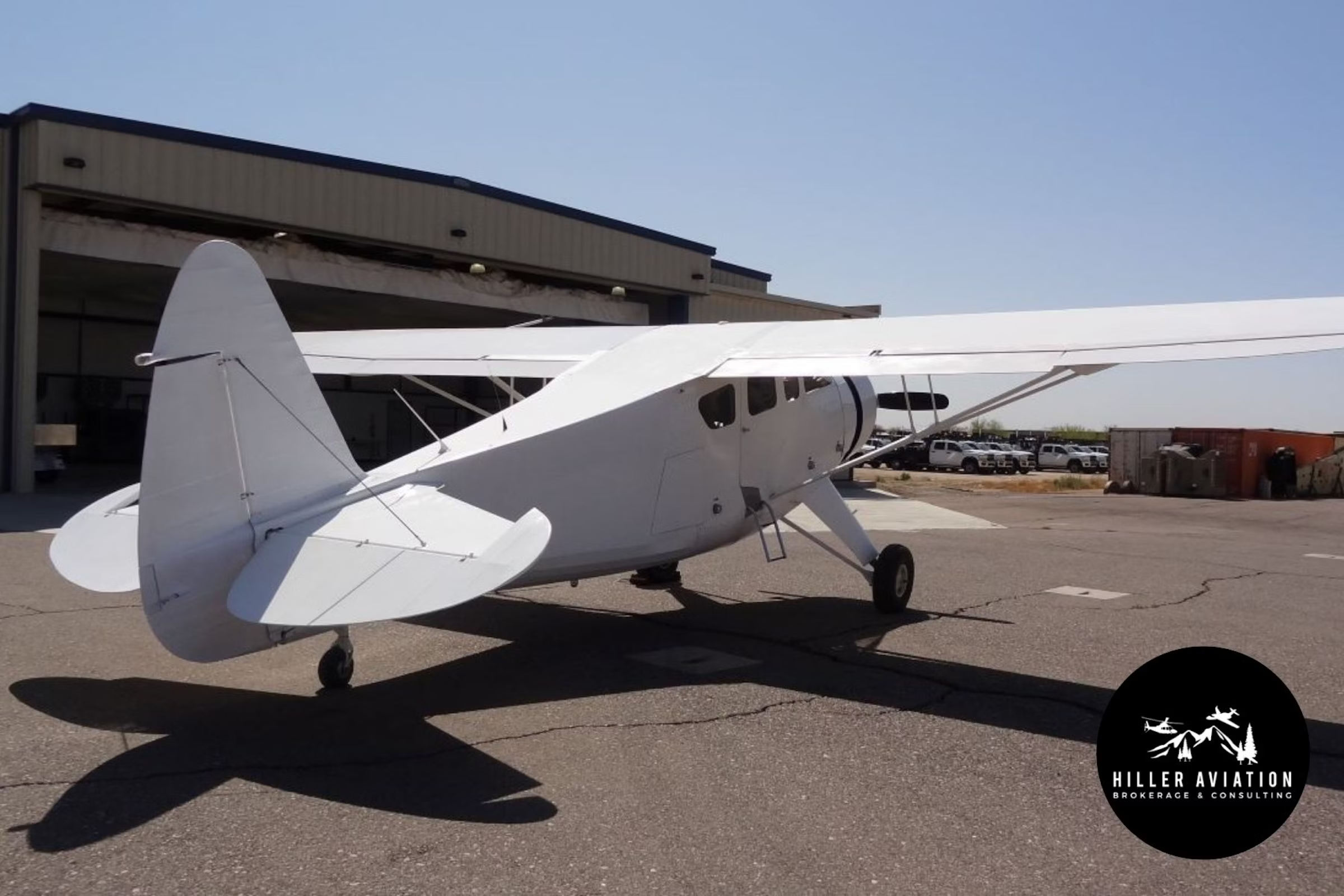Police Officers Rescue Pilot Just Before Aircraft Destroyed by Train
Body-cam footage shows officers rescue pilot from Skyhawk with mere seconds to spare.

A pilot is pulled away seconds before his aircraft is destroyed by an oncoming train. [Screengrab from police body-cam footage]
Two California police officers are being called heroes for rescuing the pilot of a Cessna 172 that came down on railroad tracks just moments before a train struck the aircraft. The accident happened Sunday at about 2:15 p.m. near Whiteman Field (KWHP) east of Los Angeles.
Police body-cam footage shows the mangled airplane sitting on a railway crossing. The pilot and sole occupant of the aircraft, his head covered in blood, is dragged from the aircraft while one of the officers shouts “Go! Go! Go! Go!” and the train’s horn sounds in the distance. About three seconds later, the double-decker commuter train collides with what is left of the aircraft. Parts of the shattered Cessna are scattered by the impact.
Foothill Division Officers displayed heroism and quick action by saving the life of a pilot who made an emergency landing on the railroad tracks at San Fernando Rd. and Osborne St., just before an oncoming train collided with the aircraft. pic.twitter.com/DDxtGGIIMo
— LAPD HQ (@LAPDHQ) January 10, 2022
The names of the officers and the pilot have not been released. The pilot was taken to a local hospital for treatment. His condition has not been released.
Airport manager Alvaro Escobedo confirmed the pilot is based at the airport.
The railway crossing is located on Osborne Street near San Fernando Road. The railroad tracks run parallel to Runway 12/30. The runway measures 4,120 feet by 75 feet with a left traffic pattern for Runway 12 and right traffic for 30. Runway 12 was in use at the time of the accident.
According to a tweet put out by the Los Angeles Police Department, the aircraft, identified as a 1967 172H model, allegedly lost power shortly after takeoff.
Activity on the Metrolink line was suspended after the accident and passengers re-routed to buses or ride-share platforms as police, the National Transportation Safety Board and the FAA investigated the accident.
About the Airport
Whiteman Field sits on 184 acres in the San Fernando Valley. The airport traces its heritage to 1946, when businessman Marvin Whiteman Sr. developed the facility on a farm, calling it Whiteman Air Park. Eventually, Whiteman built a manufacturing plant on the west side of the airport.
In 1970, the county of Los Angeles purchased the airport, and in the 1980s the airport’s name changed from Whiteman Air Park to Whiteman Field.
Once little more than a dirt strip in a rural area, today the airport is located in Class D airspace with a paved runway and a contract control tower beneath Class C airspace. Over the decades, the farm fields around the airport have given way to subdivisions of homes and light industrial areas.
The airport is a reliever for Los Angeles International (KLAX) and is used by the L.A. County Fire and U.S. Forest Service, air operations of local law enforcement, and the Civil Air Patrol.
Its Controversial History
Since 2007, the neighborhoods surrounding the airport have called for its closure and for the property to be redeveloped into affordable housing. Airport opponents argue the airport—which is one of only two municipal airports in the valley—does not benefit the community, and is dangerous given the proximity of homes and businesses to the runway.
There have been a couple high-profile accidents associated with the airport and the surrounding community.
- In November 2020, a Civil Air Patrol Cessna 182 aircraft came down short of Runway 12, after the pilot reported an uncommanded loss of engine power while on final approach. The aircraft collided with power lines and the pilot was killed. A fire resulting from the accident destroyed several cars, but there were no reports of injuries to persons on the ground.
- In 2018, a Cessna 150 with a flight instructor and 12-year-old passenger went down off the end of the runway, killing the flight instructor and injuring the passenger.
Back in 1957, a mid-air collision involving a Northern F-89 Scorpion and a Douglas DC-7 over Pacoima killed seven people and injured dozens more when the wreckage of the airliner came down on the playground of Pacoima Junior High School now known as Pacoima Middle School. The accident was made more famous as future rock star Richard Valenzuela, later known as Richie Valens, was a 15-year-old student at Pacoima Junior High School at the time.
Valenzuela was away from school the day of the accident at his grandfather’s funeral, but was friends with one of the victims. Valenzuela developed an intense fear of flying allegedly as a result of the accident. Ironically, Valens—along with musicians Buddy Holly, The Big Bopper and pilot Roger Peterson—was killed the night of February 3, 1959, when the airplane they chartered went down in a snow storm in Iowa.

Sign-up for newsletters & special offers!
Get the latest FLYING stories & special offers delivered directly to your inbox






